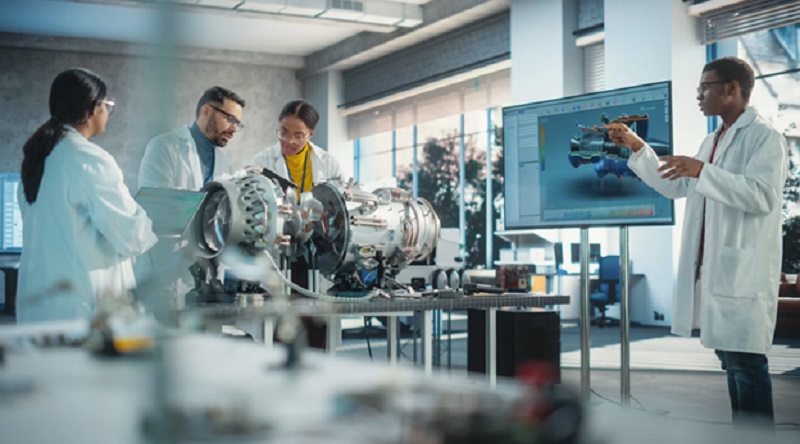
The modern world faces a growing demand for advanced safety mechanisms and reliable technological frameworks, especially in industries where protection, durability, and resilience are paramount. In response to this pressing need, defense engineering solutions have emerged as a powerful and transformative force. These carefully developed approaches blend ingenuity with precision to support a broad range of strategic objectives, ensuring operational readiness and long-term stability.
As nations and private sectors alike seek ways to strengthen their infrastructure and protect critical assets, these solutions offer a compelling combination of technical expertise and forward-thinking design. From strategic systems to durable components, the aim remains clear: foster safety while remaining adaptable to an evolving world.
The Role of Engineering in Supporting Strategic Strength
Behind every robust framework lies an intricate network of processes, systems, and collaboration. Engineering in the realm of defence is not limited to hardware or physical installations—it encompasses a broad array of innovations that influence surveillance, logistics, threat response, and infrastructure. The strength of defense engineering solutions lies in their ability to deliver scalable, adaptable, and intelligent outcomes for both public and private entities.
Whether it is designing equipment to withstand extreme environments or refining systems that ensure seamless coordination during critical moments, the role of engineering becomes indispensable. The solutions developed in this space do more than solve problems—they anticipate them, working quietly behind the scenes to secure both present needs and future demands.
Bridging Complexity and Clarity in Operational Planning
One of the most compelling strengths of engineering in defence is its capacity to bring clarity to complex operations. Large-scale activities, whether humanitarian, protective, or surveillance-driven, require seamless integration and fluid communication. Here, technology intersects with purpose—solutions must not only work but do so reliably under immense pressure.
Through the development of tailored systems, specialists help organisations align with ever-shifting objectives. Customised infrastructure, intelligent control centres, and enhanced monitoring equipment are only a few examples of how these solutions bring discipline and structure to otherwise unpredictable environments. With this balance, operations not only succeed—they thrive.
Sustainability, Resilience, and Long-Term Vision
The conversation around safety and security has shifted in recent years. No longer confined to short-term goals or temporary fixes, the focus now includes sustainability, environmental awareness, and economic longevity. Within this context, defense engineering solutions must be forward-facing, ensuring that today’s investments continue to deliver results for years to come.
It is no longer enough for a solution to be strong—it must also be sustainable. Engineers are now developing systems that consider environmental impact, material efficiency, and lifecycle longevity. This approach doesn’t just support defence—it supports communities, ecosystems, and industries connected to these expansive frameworks.
Why Versatility Matters in Modern Engineering Approaches
The world no longer functions in silos. Technology must bridge industries, tasks, and objectives with fluidity and accuracy. For this reason, versatility remains a cornerstone in the development of effective engineering strategies. By combining mechanical, digital, and data-driven elements, organisations are better equipped to navigate the unexpected.
Whether supporting communication lines, transportation networks, or command centres, versatility enables adaptation in real time. In this way, defense engineering solutions move beyond static infrastructure—they become responsive tools that empower decision-making, reduce downtime, and increase preparedness.
Integrating Human Insight with Mechanical Precision
Engineering, at its core, remains a deeply human endeavour. While machines, data, and automation continue to play a growing role, the human mind remains the engine behind innovation. Insight, creativity, and empathy guide the process from concept to completion. This blend of thought and technology brings out the very best in modern solutions.
What distinguishes lasting systems from fleeting ones is the ability to understand human needs and translate them into meaningful action. Safety is not merely a product—it’s a promise. And that promise relies on the steady hands and visionary minds who design the systems that protect us.
Looking Ahead:
As industries evolve, the balance between innovation and responsibility becomes increasingly significant. The future of engineering lies not only in creating advanced solutions but in doing so with awareness, care, and accountability. There is a responsibility to serve not only clients or institutions but also to contribute to a more secure and stable society.
In the ever-shifting terrain of today’s global landscape, defense engineering solutions represent far more than mechanical systems or reinforced structures. They embody resilience, intelligence, and a deep commitment to protection. With each development, engineers shape a safer, more prepared world—one blueprint, one idea, one breakthrough at a time.





